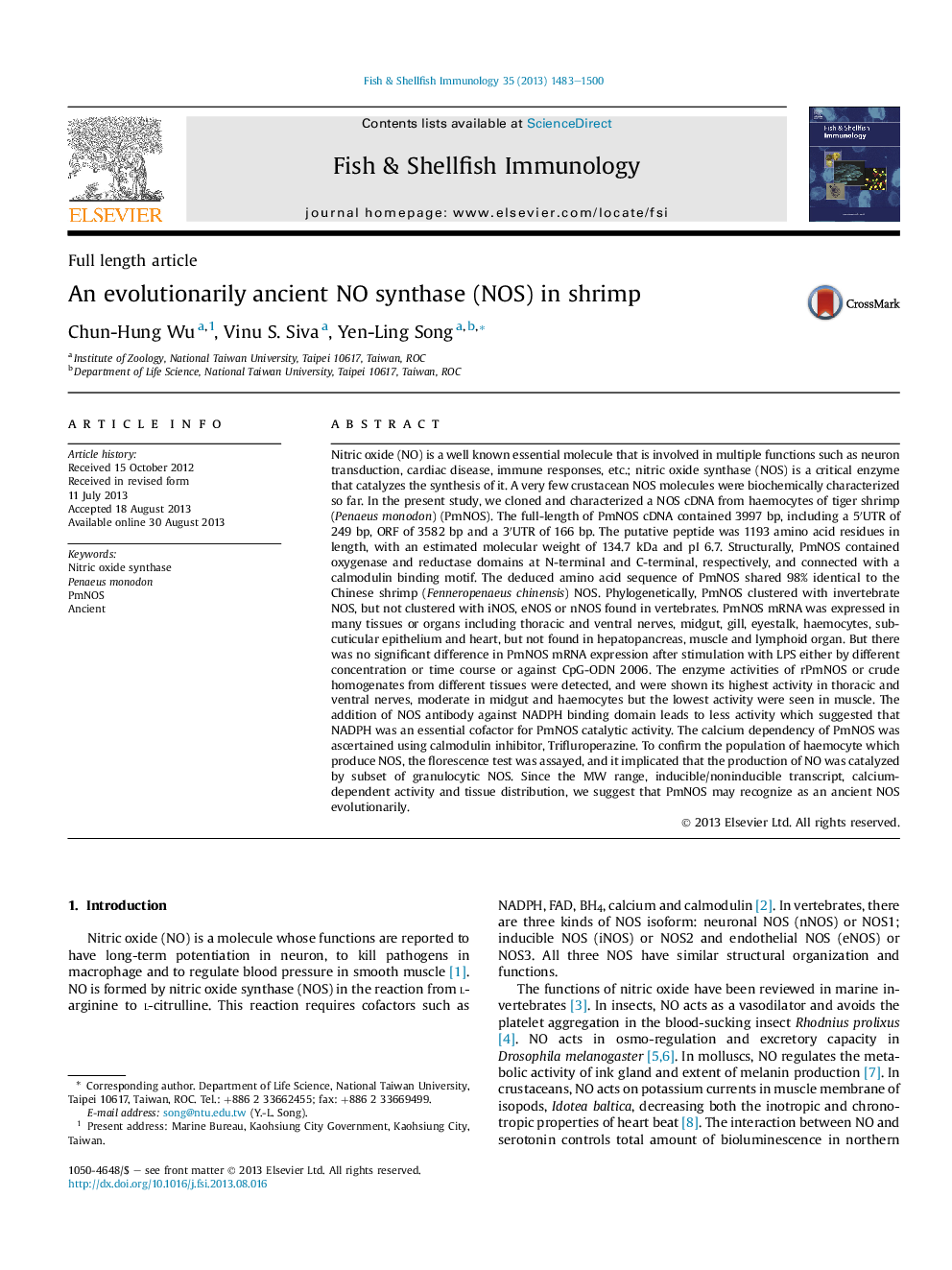| Article ID | Journal | Published Year | Pages | File Type |
|---|---|---|---|---|
| 2431719 | Fish & Shellfish Immunology | 2013 | 18 Pages |
•Molecular characterization of PmNOS.•Biochemical characterization of PmNOS.•PmNOS activity assay.
Nitric oxide (NO) is a well known essential molecule that is involved in multiple functions such as neuron transduction, cardiac disease, immune responses, etc.; nitric oxide synthase (NOS) is a critical enzyme that catalyzes the synthesis of it. A very few crustacean NOS molecules were biochemically characterized so far. In the present study, we cloned and characterized a NOS cDNA from haemocytes of tiger shrimp (Penaeus monodon) (PmNOS). The full-length of PmNOS cDNA contained 3997 bp, including a 5′UTR of 249 bp, ORF of 3582 bp and a 3′UTR of 166 bp. The putative peptide was 1193 amino acid residues in length, with an estimated molecular weight of 134.7 kDa and pI 6.7. Structurally, PmNOS contained oxygenase and reductase domains at N-terminal and C-terminal, respectively, and connected with a calmodulin binding motif. The deduced amino acid sequence of PmNOS shared 98% identical to the Chinese shrimp (Fenneropenaeus chinensis) NOS. Phylogenetically, PmNOS clustered with invertebrate NOS, but not clustered with iNOS, eNOS or nNOS found in vertebrates. PmNOS mRNA was expressed in many tissues or organs including thoracic and ventral nerves, midgut, gill, eyestalk, haemocytes, subcuticular epithelium and heart, but not found in hepatopancreas, muscle and lymphoid organ. But there was no significant difference in PmNOS mRNA expression after stimulation with LPS either by different concentration or time course or against CpG-ODN 2006. The enzyme activities of rPmNOS or crude homogenates from different tissues were detected, and were shown its highest activity in thoracic and ventral nerves, moderate in midgut and haemocytes but the lowest activity were seen in muscle. The addition of NOS antibody against NADPH binding domain leads to less activity which suggested that NADPH was an essential cofactor for PmNOS catalytic activity. The calcium dependency of PmNOS was ascertained using calmodulin inhibitor, Trifluroperazine. To confirm the population of haemocyte which produce NOS, the florescence test was assayed, and it implicated that the production of NO was catalyzed by subset of granulocytic NOS. Since the MW range, inducible/noninducible transcript, calcium-dependent activity and tissue distribution, we suggest that PmNOS may recognize as an ancient NOS evolutionarily.
